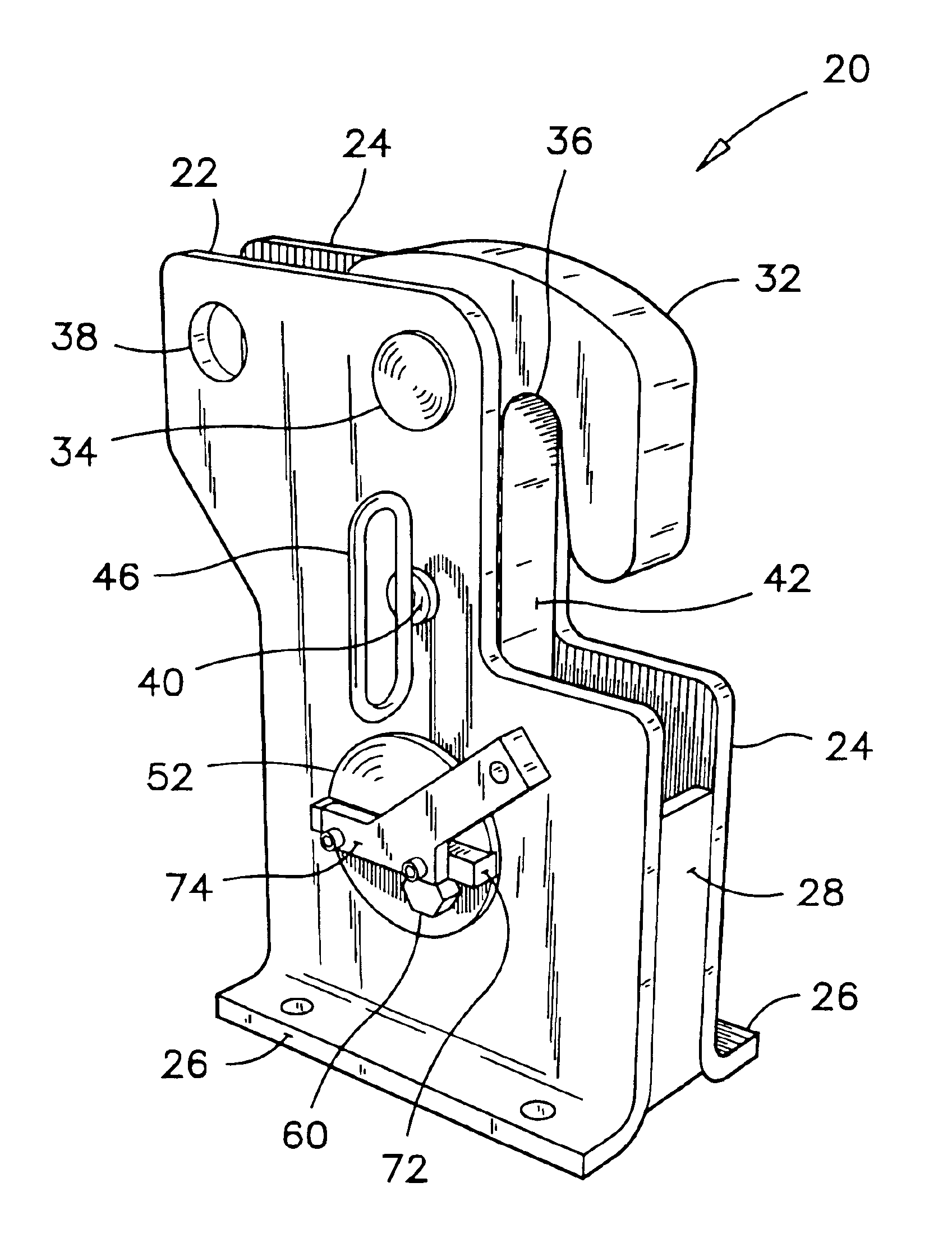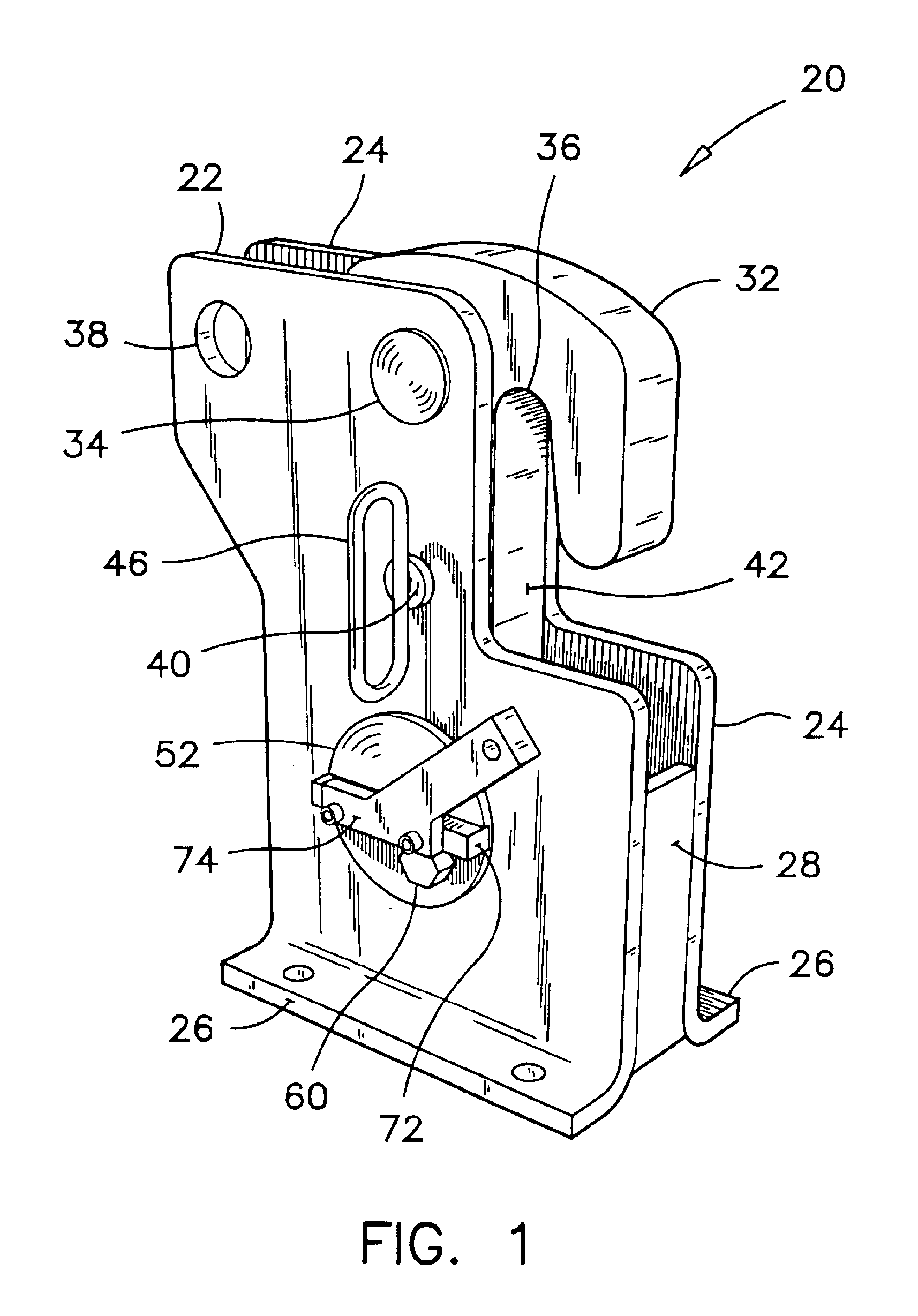Lifeboat release mechanism
a release mechanism and release mechanism technology, applied in lifeboat handling, vessel safety, floating buildings, etc., can solve the problems of lifeboat lines, lifeboats exposed to sea water, harsh weather conditions, and malfunctions of release mechanisms
- Summary
- Abstract
- Description
- Claims
- Application Information
AI Technical Summary
Benefits of technology
Problems solved by technology
Method used
Image
Examples
Embodiment Construction
[0038]While this invention is susceptible of embodiment in many different forms, there is shown in the drawings and will be described in details herein one specific embodiment, with the understanding that the present disclosure is to be considered as an example of the principles of the invention and is not intended to limit the invention to the embodiment illustrated and described.
[0039]The preferred lifeboat release mechanism 20 is illustrated in its entirety in FIG. 1 while the illustrations of FIGS. 2-4 are provided to explain the interaction of the various structural elements thereof.
[0040]The lifeboat release mechanism has a pair of side plates 22, 24 that are fastened to a lifeboat by way of a flange 26 on each side plate. Although a pair of holed flanges 26 are suggested to fasten the release mechanism to a lifeboat by bolts (not shown), it will be appreciated that other attachment means can also be used, depending upon the structure of the lifeboat. The side plates 22, 24 ar...
PUM
 Login to View More
Login to View More Abstract
Description
Claims
Application Information
 Login to View More
Login to View More - R&D
- Intellectual Property
- Life Sciences
- Materials
- Tech Scout
- Unparalleled Data Quality
- Higher Quality Content
- 60% Fewer Hallucinations
Browse by: Latest US Patents, China's latest patents, Technical Efficacy Thesaurus, Application Domain, Technology Topic, Popular Technical Reports.
© 2025 PatSnap. All rights reserved.Legal|Privacy policy|Modern Slavery Act Transparency Statement|Sitemap|About US| Contact US: help@patsnap.com



